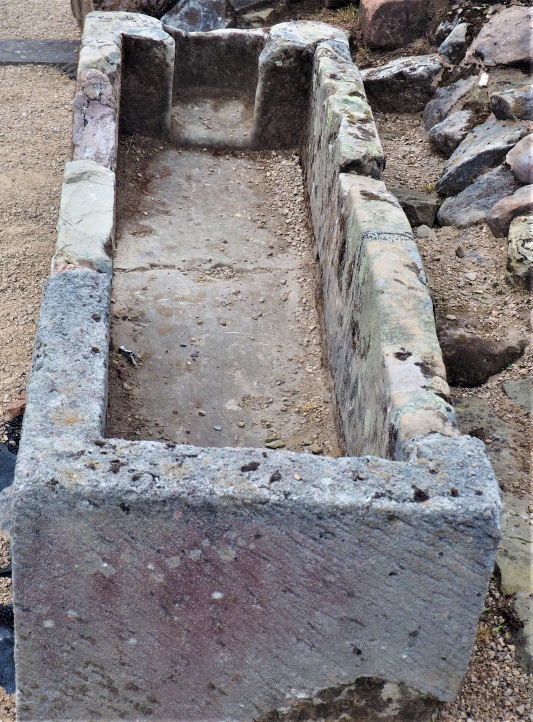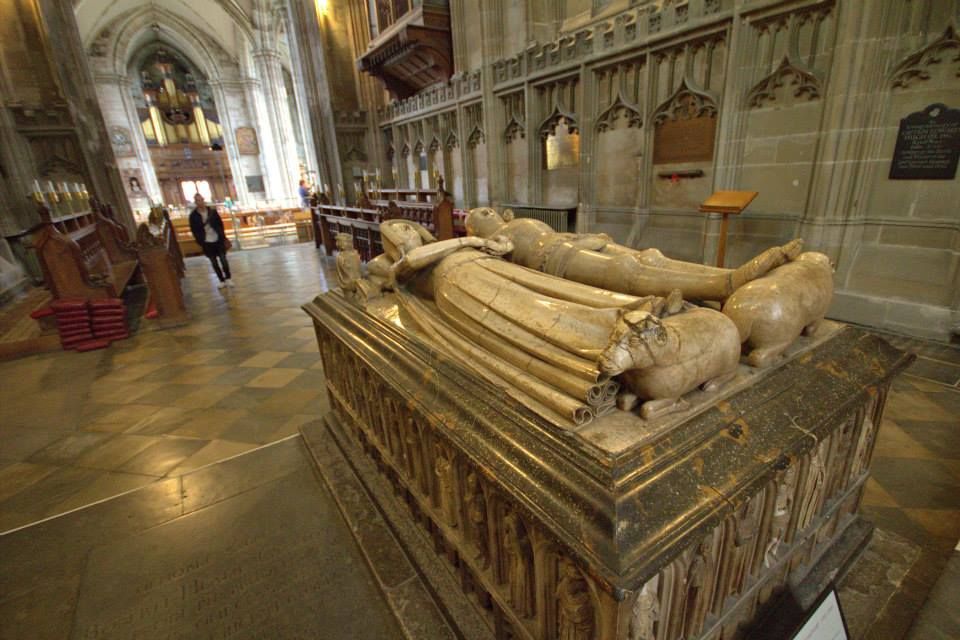


The death of Piers Gaveston, 1st Earl of Cornwall begins with the question of King Edward II's sexuality which has been wrought with speculation for centuries. However, Edward II did have his particular favorite who garnered the king's attention more than that of his Queen. It has been said that Edward's father, Edward I, was not pleased with his son's behavior. Enter the "Mad Hound of Arden," Sir Guy de Beauchamp, 10th Earl of Warwick.
Richard Cavendish | Published in History Today Volume 62 Issue 6 June 2012
Soaring up from a comparatively humble background, King Edward II’s favourite flew too high and paid the penalty. Piers Gaveston was born around 1284, the son of a Gascon lord, who gave many years of loyal service to Edward I. In his early teens Piers became a member of the royal household. In 1300 he was moved to that of the Prince of Wales, the future Edward II. They were both about 16, took to each other and an extremely close friendship developed. There were many at the time who thought it was a homosexual relationship, but some modern historians see it as more like close brotherly love. The two may have been sworn blood-brothers and Edward referred to Gaveston as ‘my brother Piers’. Edward would have four children by his French queen, Isabella, but he could have been bisexual.
Whatever the exact nature of the relationship, it spelled trouble. In 1307 Edward I banished Gaveston from England, though he was to be paid an allowance while awaiting recall, but the king died soon afterwards and the new king immediately brought Gaveston back to his side, made him Earl of Cornwall and bestowed on him an extremely well-connected aristocratic wife and substantial quantities of land and money. Edward II was not remotely the man his father was and he had serious trouble with some of his father’s most powerful barons, who bitterly resented being sidelined by a man they considered an arrogant, greedy upstart.
In 1308 Edward allowed Gaveston a provocatively prominent role in his coronation and the ensuing banquet, at which he paid so much attention to the favourite that Queen Isabella’s French relatives walked out. The king was forced to send Gaveston away to Ireland later that year, but he was back in 1309 and resumed his dominant position at court as Edward’s principal adviser and controller of royal patronage. He behaved as arrogantly as ever and allegedly bestowed disparaging nicknames on leading figures in the realm. Guy de Beauchamp, Earl of Warwick was ‘the Black Dog of Arden’, Aymer de Valence, Earl of Pembroke was ‘Joseph the Jew’ and the generally much-respected Earl of Lincoln was ‘Burst Belly’. By March 1310 opposition had mounted to such a point that the king had to agree to the appointment of the Lords Ordainers, a committee of 21 earls, barons and bishops who were to draw up rules for the management of the royal household and the realm. Meanwhile the king led a military campaign in Scotland that failed to subdue Robert the Bruce.
In August 1311 the Ordainers produced their new rules and demanded that Gaveston be sent into exile and never allowed to return. The horrified Edward offered to agree to the changes if Gaveston was allowed to stay, but the Ordainers would have none of it and in November the favourite left the country. He was back in England again by the following January, however, and Edward announced that Gaveston’s exile had been unlawful, restoring all his confiscated possessions.
The country was now threatened with civil war as the barons gathered their private armies. The Earl of Lancaster (who was Edward I’s nephew) almost caught the king and Gaveston in Newcastle, but they just managed to escape and fled by sea to Scarborough, where Edward left Gaveston and went to York. Gaveston was besieged in Scarborough Castle by the earls of Pembroke and Warwick. In May Gaveston surrendered to Pembroke on condition that, if no agreement could be reached with the king by August 1st, he would be sent back to Scarborough Castle, which was not to be reinforced in the meantime. Pembroke took Gaveston to a town called Deddington, south of Banbury, and left him there for the moment. On the following day, to the dismay of Pembroke, who had guaranteed Gaveston’s safety, the favourite was seized by the Earl of Warwick and taken to Warwick, where he was paraded past a jeering crowd and put in a dungeon in the castle.
Lancaster and Warwick decided that Gaveston must die. After some pretence of a trial, apparently, he was taken to Blacklow Hill, not far from Warwick, on land that belonged to Lancaster, and run through with a sword before his head was cut off. He would have been about 28 years old.
Gaveston’s body was left lying there to rot, but was later rescued, embalmed and eventually buried in the Dominican friary at King’s Langley in Hertfordshire. In 1823 a monument was erected on Blacklow Hill by the local squire on the spot where Gaveston was thought to have been executed. The disapproving inscription describes him as ‘the Minion of a hateful King’ beheaded ‘by Barons as lawless as himself.’
"Guy Earl of Warwick, who of all that are mentioned in my rhyme had not a better neighbour than himself, bore a red banner with a fess of gold and crusilly". Poem of the Siege of Carlaverock.
Guy Beauchamp was the second member of the Beauchamp family to become Earl of Warwick. With a power base largely in the midlands surrounding Warwick Castle he is one of the most powerful and wealthy barons in the land.
Born sometime in 1272 there is nothing known about his early life until 1296 at the age of 24 he is knighted in the spring. One year later he married Isabella de Clare, daughter of the Earl of Gloucester. Guy is described by his contemporaries as ‘bene literatus’, meaning a man of great education and intelligence. He is known to have owned several books – extremely valuable items – covering diverse subjects such as romance, surgery, history, religion and classics. By contrast to this well read and educated man we know he was a highly skilled soldier and serves at Falkirk and is present at the sieges of Carlaverock and Stirling.
In 1302 he starts divorce proceedings against Isabella – an unusual course of action for the period – but as no children had been born in five years of marriage Guy was obviously feeling the need to produce an heir. In 1310 he remarries Alice de Tony and they go on to produce six children in the next five years.
His opinions and experience are valued and sought by many of his peers and is one of the leading barons who oppose King Edward and Piers Gaveston, a Gascon and great favourite of the king. In contemporary reports he is seen as the chief architect of the ‘ordinances’ – a document forced upon the King in 1311 and by which the barons controlled the Kings power and exiled Gaveston.
Beauchamp and Gaveston are enemies from the very beginning of Edwards reign with Gaveston calling Beauchamp “the black dog of Arden”. It is reported that when Beauchamp heard this name he said ‘if he call me a dog, be sure that I will bite him so soon as I shall perceive my opportunity”. His opportunity would arise a year later when Gaveston returned from exile – Beauchamp seized the chance after the Earls of Pembroke and Warren along with Henry Percy had taken Gaveston by force from Scarborough Castle – he moved in and took Gaveston to Warwick, apparently riding a donkey all the way. After a hasty trial Gaveston was condemned to death and executed at Blacklow Hill – the nearest land to Warwick Castle belonging to Thomas, Earl of Lancaster.
Although Edward was undoubtedly upset by the death of Gaveston he makes no obvious moves against Beauchamp at this time and in 1313 is pardoned by the king for his part in the affair. As the war with Scotland rises to fever pitch in 1314 and Edward takes an army north, Beauchamp and Lancaster do not send men and do not attend. The subsequent defeat of the English at Bannockburn can only have lead Edward to blame Beauchamp and Lancaster.

 A year later in 1315 Beauchamp falls ill and dies – a very convenient death for Edward – and contemporaries do speculate on the use of poison. He was buried at Bordsley Abbey, Redditch, Worcestershire, with instructions to his family to perform the ceremony ‘without any great pomp’. For reasons yet unknown, his grave remains empty, the whereabouts of his remains, unknown.
A year later in 1315 Beauchamp falls ill and dies – a very convenient death for Edward – and contemporaries do speculate on the use of poison. He was buried at Bordsley Abbey, Redditch, Worcestershire, with instructions to his family to perform the ceremony ‘without any great pomp’. For reasons yet unknown, his grave remains empty, the whereabouts of his remains, unknown.


Tomb of Sir Thomas de Beauchamp,
son of Sir Guy de Beauchamp
NOTE:The AI photograph of Sir Guy was created
from the photo above it of the mini sculpture.
© Copyright 2016 by www.kingrichard3.com. All Rights Reserved. Design by Anariel Designs